Gian Lorenzo Bernini was a famous Italian architect, sculptor, and painter most important for his impact on the Roman Baroque style. Also, he was a stage designer, poet, and dramatist.
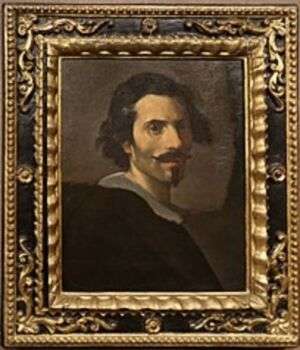
About His Life
Gian Lorenzo Bernini was born in Naples, in 1598. He became a successful artist in his teens when he worked for the most powerful families and the popes of Rome. Soon, he became famous across the whole of Europe. Most, notably, King Charles I of England and King Louis XIV of France were among his royal patrons. Additionally, as he was simultaneously a sculptor, architect, painter, stage designer, poet, and playwright, Bernini created unique dynamic monuments that combined these art forms into a single piece. His career lasted until he died in 1680.
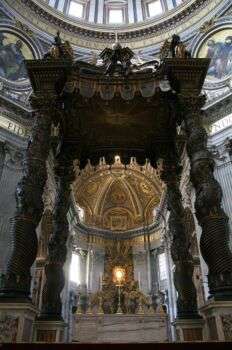
Image source: https://search.creativecommons.org/photos/ef15b7e5-4717-4e5f-a408-ee9e4a58f76a by Jean-Pol GRANDMONT
His Major Roman Works
- The Fountain of the Four Rivers: Built in 1648, in Piazza Navona, the piece was commissioned by Pope Innocent X to glorify the Pope and his family. It supports an ancient Egyptian obelisk surrounded by marble sculptures, which represent four major rivers of the four continents that were known at that time.

Image source:https://search.creativecommons.org/photos/d3282aa4-0f69-425d-9961-2113e640028b by George M. Groutas
- Cornaro Chapel in Santa Maria della Vittoria: The greatest Bernini masterpiece, created in the mature period of his art. Its main attraction is the Ecstasy of Saint Teresa (1645–1652), which is the sculpture that depicts the mystical experience of the great Spanish reformer of the Carmelites, Teresa of Avila. Moreover, the use of light, trompe l’oeil frescoes, as well as marble, gilded wood, and gilded bronze materials, create an incredible visual effect in this spatial structure.
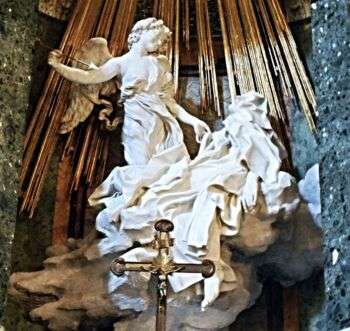
Image source: https://search.creativecommons.org/photos/03656560-b0ec-4433-966e-6f72a20a489a by Carlo Raso
His Work in Vatican City
- St. Peter Baldachin in St. Peter’s Basilica: A sculpted gilded-bronze canopy, was the first truly Baroque monument. He created it during the pontificate of Urban VIII, and it was to mark the place of Saint Peter’s tomb underneath. In addition, the structure is architecturally imposing because its height was greater than that of many buildings. However, the execution relied primarily on his sculptural gifts. Bernini was able to make hard material seem soft and malleable, giving a dynamic aspect to a static form.
- The colonnade surrounding the square in front of St. Peter’s Basilica: The greatest architectural achievement of Bernini, which consists of 284 Doric columns and 88 pilasters, situated in four rows. At the top of the colonnade, there are 140 statues of popes, martyrs, evangelists, and other religious leaders. Bernini and his students created all these statues. Bernini’s talent is especially noticeable if you carefully examine the location of the columns. The ellipsoidal colonnade of 2 semicircles (Piazza Obliqua), generally traditional for the Baroque, turned 90 degrees so that the long transverse axis was not perpendicular but parallel to the façade. Further, the rhythmic alternation of a fountain, an obelisk, and another fountain, clearly dictates to the viewer’s mind that this is an ellipse. But the eye, accustomed to accurately determining the horizontal distance, still sees the circle.
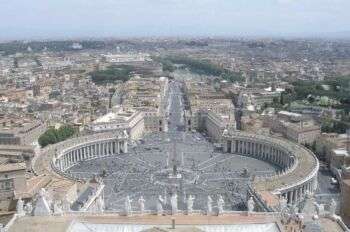
Image source: https://search.creativecommons.org/photos/14f51788-cfc4-461b-a760-acb07ee0e18b by Argenberg
- Cathedra Petri or Chair of St. Peter or Throne of St. Peter: Designed to display the chair on which, according to ancient tradition, St. Peter sat and taught Roman Christians. Additionally, Pope Alexander VII had the ivory-covered chair put into the gigantic bronze cathedra, with the statues of the Doctors of the Church, St. Ambrose and St. Augustine of the Roman Church, and St. Athanasius and St. John Chrysostom of the Greek Church.
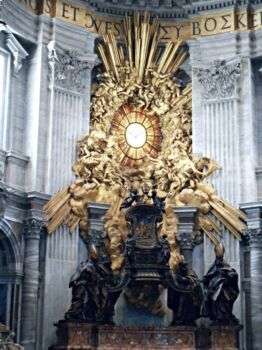
Image source: https://search.creativecommons.org/photos/7b6166da-6ba5-4c0f-8d94-decce8bf1f7c by Carlo Raso
Features of His Style
- Meticulous attention to detail, grandiose theatricality, and ornate design
- A high percentage of his work was centered on religious themes
- Created swirling, dynamic compositions visible from all directions, inviting the viewer to be part of the scene
- Figures are placed diagonally, characteristic of Baroque sculpture
- In addition to being a visual experience, his works are also a tactile experience.
- His figures are always somewhat idealized
- Illusion and sense of movement
- Using a combination of sculpture, architecture and painting he created a new idea of what a work of art could encompass
- Used a casting method called the lost-wax method

Image source:https://search.creativecommons.org/photos/74318d9c-22e4-4e43-acc0-8e57a1c58a7f by Northfielder
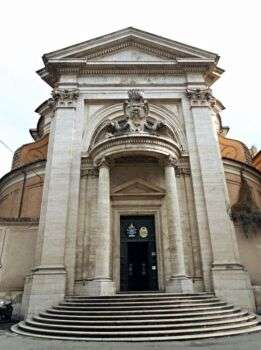
Image source: https://search.creativecommons.org/photos/38ffd196-bd3b-4d20-a6bd-3458e1ba3d02 by Carlo Raso
Info sources:
https://www.nga.gov/exhibitions/2000/baroque/indepth2.shtm http://www.ovo.com/en/st-peter-s-baldachin/ http://honorsaharchive.blogspot.it/2005/09/st-peters-piazza.html http://www.aviewoncities.com/rome/piazzasanpietro.htm http://stpetersbasilica.info/Docs/GuideSPB3.htm#Cathedra http://www.artble.com/artists/gian_lorenzo_bernini/more_information/style_and_technique
http://www.artble.com/artists/gian_lorenzo_bernini/sculpture/fountain_of_the_four_rivers
http://www.visual-arts-cork.com/sculpture/ecstasy-of-saint-teresa.htm
